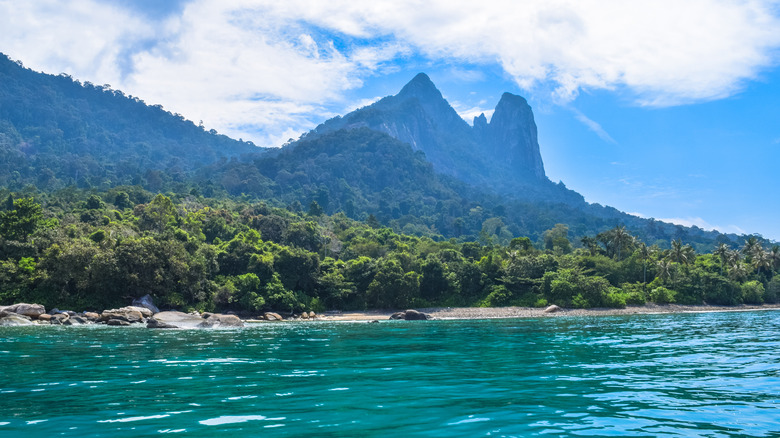Malaysia's Hidden Tropical Gem: A Friendly Coral Paradise with Few Crowds

Discovering Tioman Island: A Hidden Tropical Paradise
If you're familiar with Langkawi and Penang, two of Malaysia’s most picturesque islands, you might be missing out on another stunning destination that is just as breathtaking. Located approximately 20 miles off the east coast of mainland Malaysia, Tioman Island offers a unique blend of natural beauty, adventure, and tranquility. Despite its remote location, it remains a hidden gem with fewer crowds, making it an ideal escape for those seeking an authentic tropical experience.
Tioman Island, also known as Pulau Tioman, has earned recognition from prestigious publications such as Time magazine and CNN, who have ranked it among the most beautiful islands in the world. It is the largest island in the nine-island group that makes up the Pulau Tioman Marine Park. Established in 1994, the marine park has been protecting its surrounding waters since 1985, ensuring the preservation of one of the healthiest coral reef systems in Malaysia. According to local legend, the island was formed by Sri Gumom, a Chinese dragon princess who fell in love with the waters of the South China Sea and chose to stay there forever, transforming herself into the island to offer sailors a place of rest.
Beaches and Natural Wonders
Tioman Island boasts a variety of beaches that cater to different interests. Tekek Village, located on the west coast, is the largest and most developed area on the island. It features a marina, a bank, a clinic, and Tekek Beach, which is perfect for relaxation. On the eastern coast, Juara Beach is a favorite among surfers, while Salang Beach on the west side is ideal for swimming and snorkeling. Air Batang Beach, also known as ABC Beach, is a popular spot for watching sunsets and offers a lively backpacker atmosphere.
However, accessing different parts of the island can be challenging. The central mountain range and limited road infrastructure mean that getting around often requires additional transportation such as motorbikes, water taxis, or hikes. This adds to the island's charm, offering visitors a chance to explore its diverse landscapes.
Adventure and Conservation
The western side of Tioman Island is where the rainforest meets the ocean, creating a perfect setting for adventure. The Juara Turtle Project is a notable initiative dedicated to protecting sea turtles for over two decades. Visitors can participate in volunteer programs to help with conservation efforts. Other activities include hiking to the Asah Waterfall, exploring the island on an ATV, or diving into the underwater wonderland of the ancient coral reefs.
Some of the coral reefs on Tioman Island are over 6,000 years old and host a wide variety of marine life, including potato and lettuce corals, sea fans, and whip corals. These protected waters make Tioman one of the top snorkeling and diving destinations in Asia.
How and When to Visit
Visiting Tioman Island is relatively straightforward. The most common and affordable way is by taking a ferry from Mersing or Tanjung Gemok. Mersing offers more frequent departures, and tickets can be purchased online or at the Mersing Harbour Centre. It is also recommended to pay the mandatory conservation fee at the Marine Park Center located in the same building.
The island enjoys a consistently warm climate throughout the year, with an average temperature of 86 degrees Fahrenheit. The dry season, from April to October, is considered the best time to visit, with June through August being the high season due to optimal snorkeling and diving conditions. During this period, hotels and activities may be more expensive. For experienced surfers, the monsoon season from November to March offers great waves at Juara Beach, along with lower hotel prices.
Tioman Island offers a unique blend of natural beauty, adventure, and cultural heritage. Whether you're looking for a peaceful retreat or an exciting exploration, this hidden gem is sure to leave a lasting impression.
Post a Comment for "Malaysia's Hidden Tropical Gem: A Friendly Coral Paradise with Few Crowds"
Post a Comment